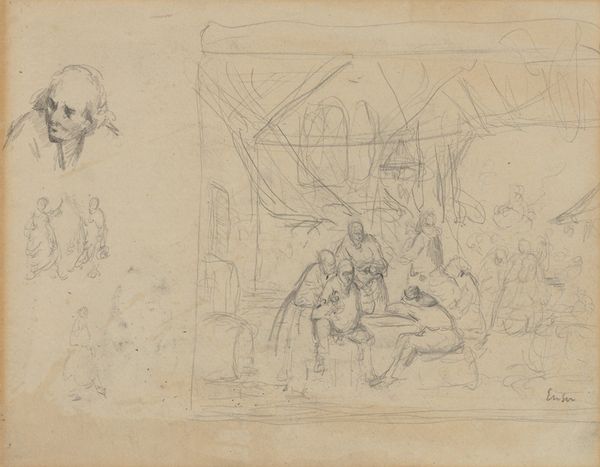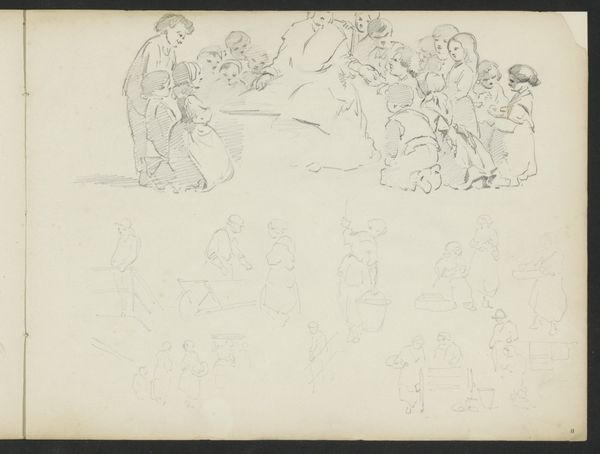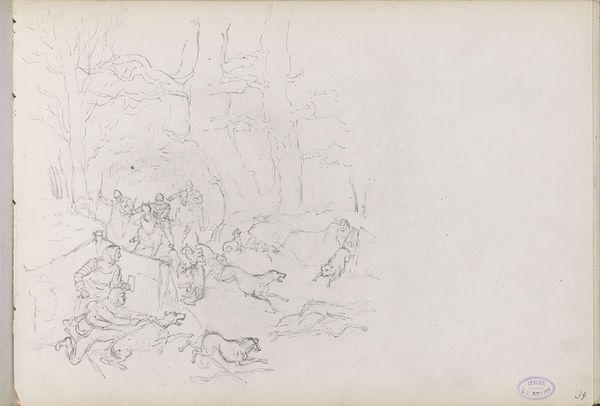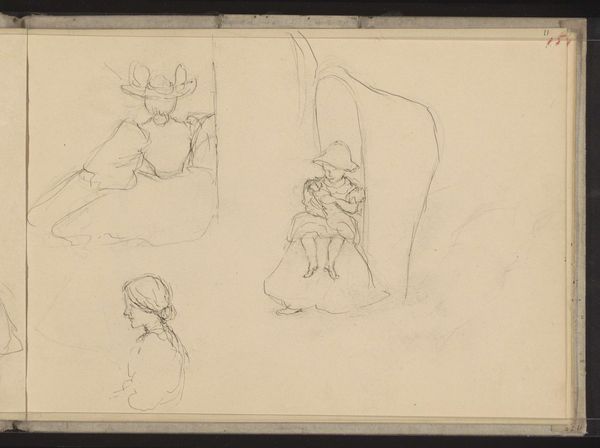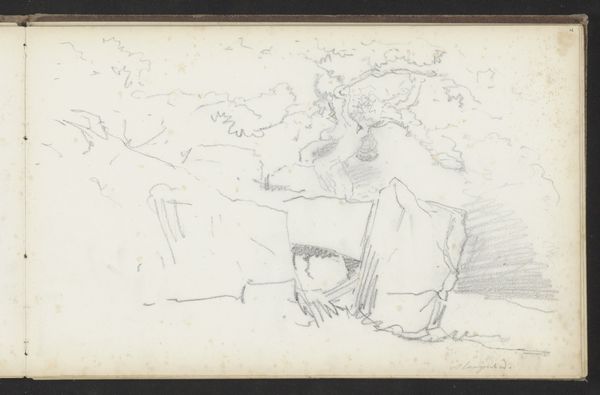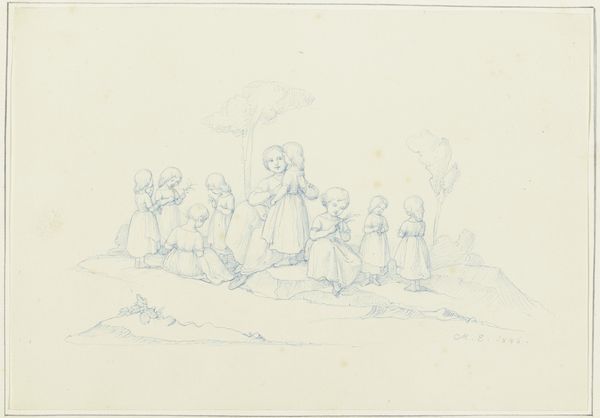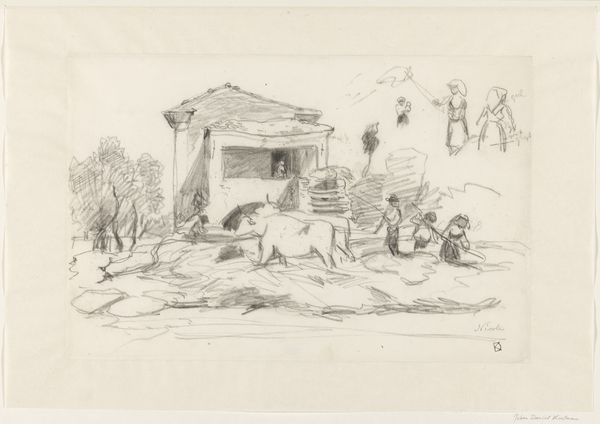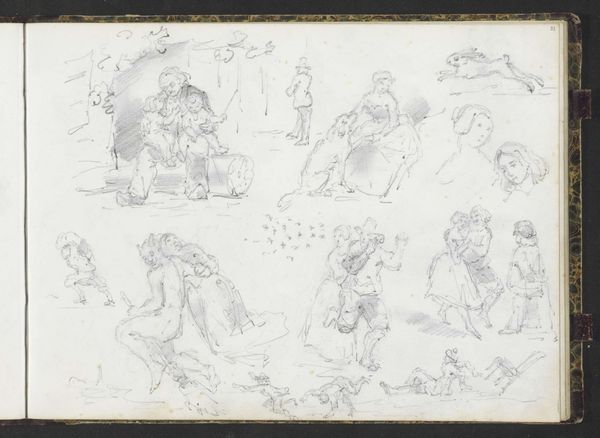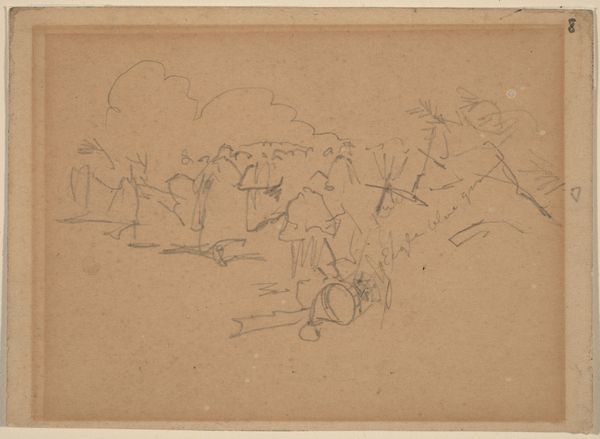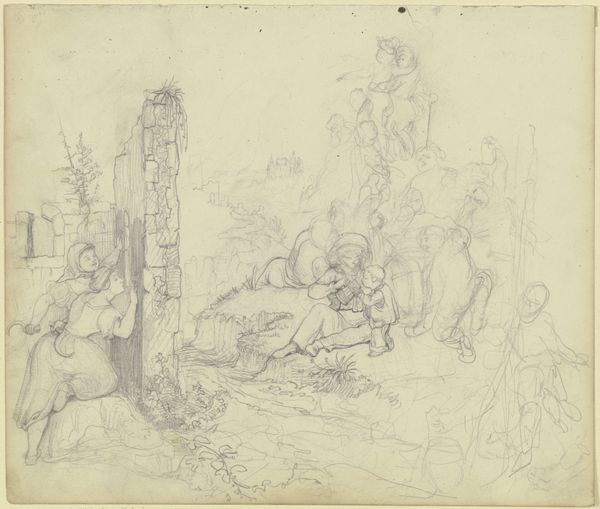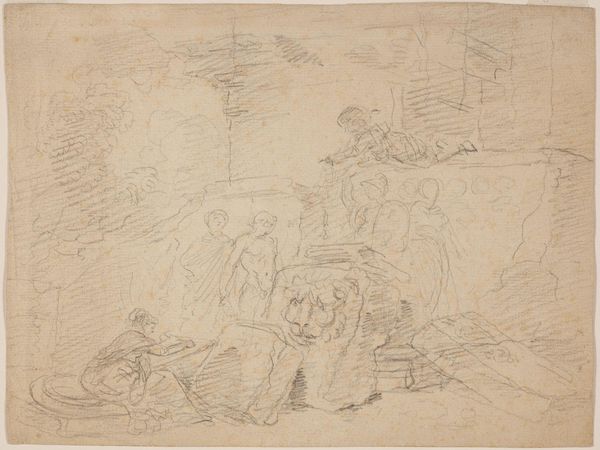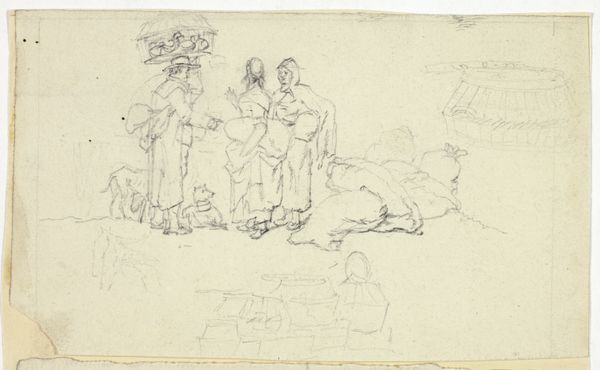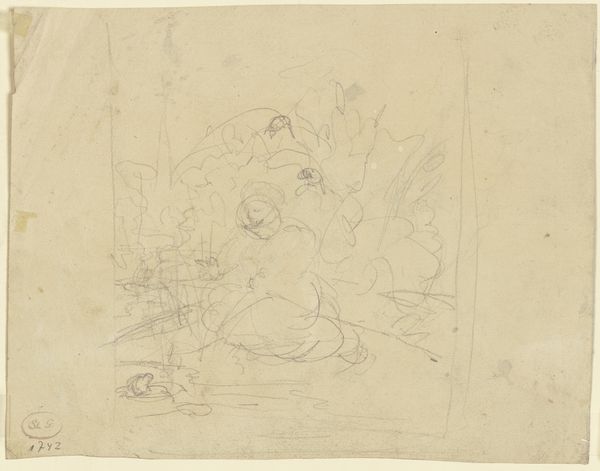
drawing, pencil
#
portrait
#
drawing
#
dutch-golden-age
#
pen sketch
#
sketch book
#
landscape
#
personal sketchbook
#
sketchwork
#
ink drawing experimentation
#
pen-ink sketch
#
pencil
#
pen work
#
sketchbook drawing
#
genre-painting
#
storyboard and sketchbook work
#
sketchbook art
Copyright: Rijks Museum: Open Domain
Editor: We’re looking at "House in a Landscape with Seated Children", a sketch from between 1834 and 1911 by Jozef Israëls, currently held in the Rijksmuseum. It seems like a quick study, maybe pencil or ink, capturing children in a rural setting. It's incredibly intimate, almost voyeuristic. What strikes you most about it? Curator: I think it is really interesting to examine how this intimate sketch engages with the social expectations placed on representations of childhood and rural life during the late 19th century. How does it portray a certain class identity? Editor: I guess, considering the artist, Jozef Israëls, it might connect with the Hague School's focus on realism and everyday life? Curator: Precisely. The Hague School was invested in depicting the lives of ordinary people, particularly the working class. Israëls often focused on scenes of peasant life and poverty, imbuing them with a sense of dignity and quiet suffering. Do you think that perspective on human labor informs our interpretation of childhood? Editor: So, these aren’t just anonymous kids, these are kids embedded in a very particular time and social reality, where their childhood might look a lot different from our own? It feels very un-idealized. Curator: Exactly! The sketch might resist the saccharine representations of childhood prevalent in some academic circles by engaging a raw view of its time and circumstance. This choice carries its own implicit politics. Can you suggest why the museum showcases a piece like this to the public? Editor: Maybe to encourage a nuanced reflection on our own history and socio-political landscape. Curator: Precisely. These artistic endeavors serve as portals through which we might perceive and reevaluate the ever shifting present moment. Thank you for making me see this work in a fresh way! Editor: The pleasure was all mine. I hadn't thought about it that way!
Comments
No comments
Be the first to comment and join the conversation on the ultimate creative platform.
